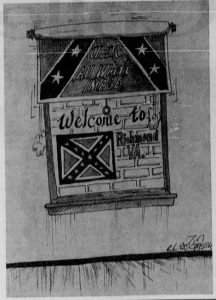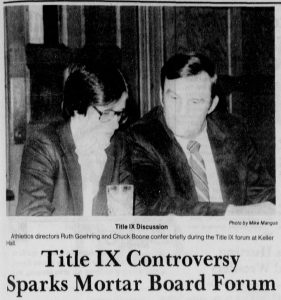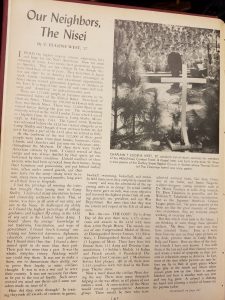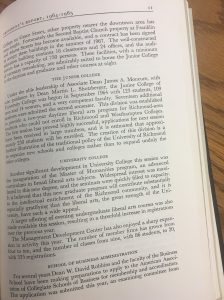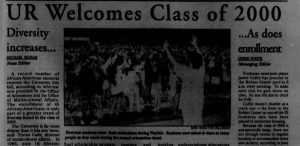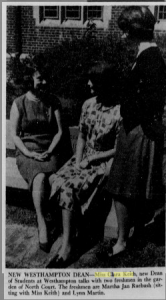By Cassidy Lowther
On November 28, 1934, The Collegian released an article entitled, “Frosh to Hold Indian Trial at Cheer Rally.” The article discusses the rally presented at the car loop above the stadium in celebration of the rivalry between the University of Richmond and the College of William and Mary. Some of the plans for this Thanksgiving Day gridiron classic included widely-known speakers who were expected to delve into football history and spur Richmond toward a victory. Most notably, however, the article details an “important feature of the program” — the mock trial of the Indian chieftain, “Legrandesadebryantspackbridgers.” If found guilty by vote of the jury, the accused would be hanged, and then hoisted above the huge bonfire structure.
Tracing its origins back to 1896, the William and Mary football team was first nicknamed “The Orange and White” after their team colors (WM). It wasn’t until 20 years later, in 1916, the nickname “Indians” was first referenced in the 1916 edition of the Colonial Echo; referring to the basketball team. Between 1916 and the 1930s, the college logo and nickname continued to change and evolve with W&M earning the title of “Fighting Virginians” in 1923, changing their colors to green, gold, and silver in 1924, and adopting a 17-foot alligator named “Cal” as their mascot in 1927 (WM). However by the late 1930s, the W&M mascot was yet again changed; taking the place of “Cal,” the 17-foot alligator was an Indian pony named WAMPO (WM). Deriving its name from “William and Mary POny,” WAMPO often carried a rider in full Indian attire (WM).
The mock trial of the Indian chieftain originated as a way to rally against William & Mary, rather than against Indian people as a whole; yet, it begs the question: What were the state of relations between Richmond, Virginia and indigenous people at the time? The students of Richmond at the time remained unfazed by such a violent act; this in and of itself, the very action of inaction, speaks to the prevalence of racism. In June 18, 1934, the Indian Reorganization Act, also called the Wheeler-Howard Act, was enacted by the U.S. Congress (Britannica). “Aimed at decreasing federal control of American Indian affairs and increasing Indian self government and responsibility,” the Indian Reorganization Act was a way the United States government attempted to show its gratitude for service to the country in World War I (Britannica). While this act was a step in the right direction, ultimately it was just one small measure towards the ultimate aim of establishing a more equal footing for Native Americans. In spite of the fact that Native Americans were granted citizenship in 1924, many states barred Native Americans from the right to vote until 1957 (America’s Library).
Cassidy Lowther graduated from the University of Richmond in May 2017, with a major in Rhetoric & Communication Studies. She is originally from Riverside, Connecticut. She worked on the Race & Racism at UR Project twice throughout her time at the University — first, in Digital Memory & the Archive (Fall 2016), and in an independent study (Spring 2017). Her biggest takeaway from working on the project has been the significance of the initiative’s mission in bringing about the untold history of race and racism at the University.
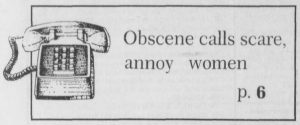 On February 23, 1984, Collegian staff writer Ginny Yoder broke a story on sexual harassment plaguing the University of Richmond: “Obscene: Women get phone calls.” Residents in the Westhampton College dorms and University Forest Apartments had begun to receive obscene phone calls from unidentified callers. An epidemic of sexual harassment began spread from phone to phone around Westhampton College.
On February 23, 1984, Collegian staff writer Ginny Yoder broke a story on sexual harassment plaguing the University of Richmond: “Obscene: Women get phone calls.” Residents in the Westhampton College dorms and University Forest Apartments had begun to receive obscene phone calls from unidentified callers. An epidemic of sexual harassment began spread from phone to phone around Westhampton College.
